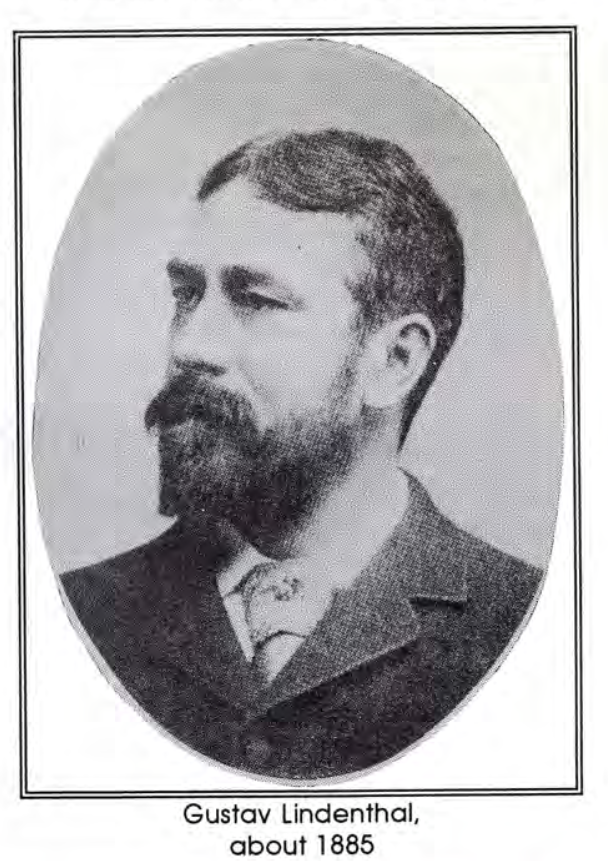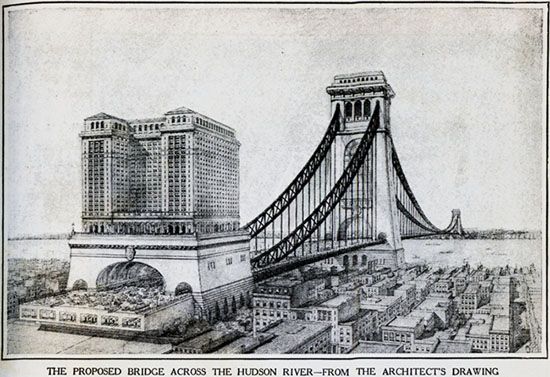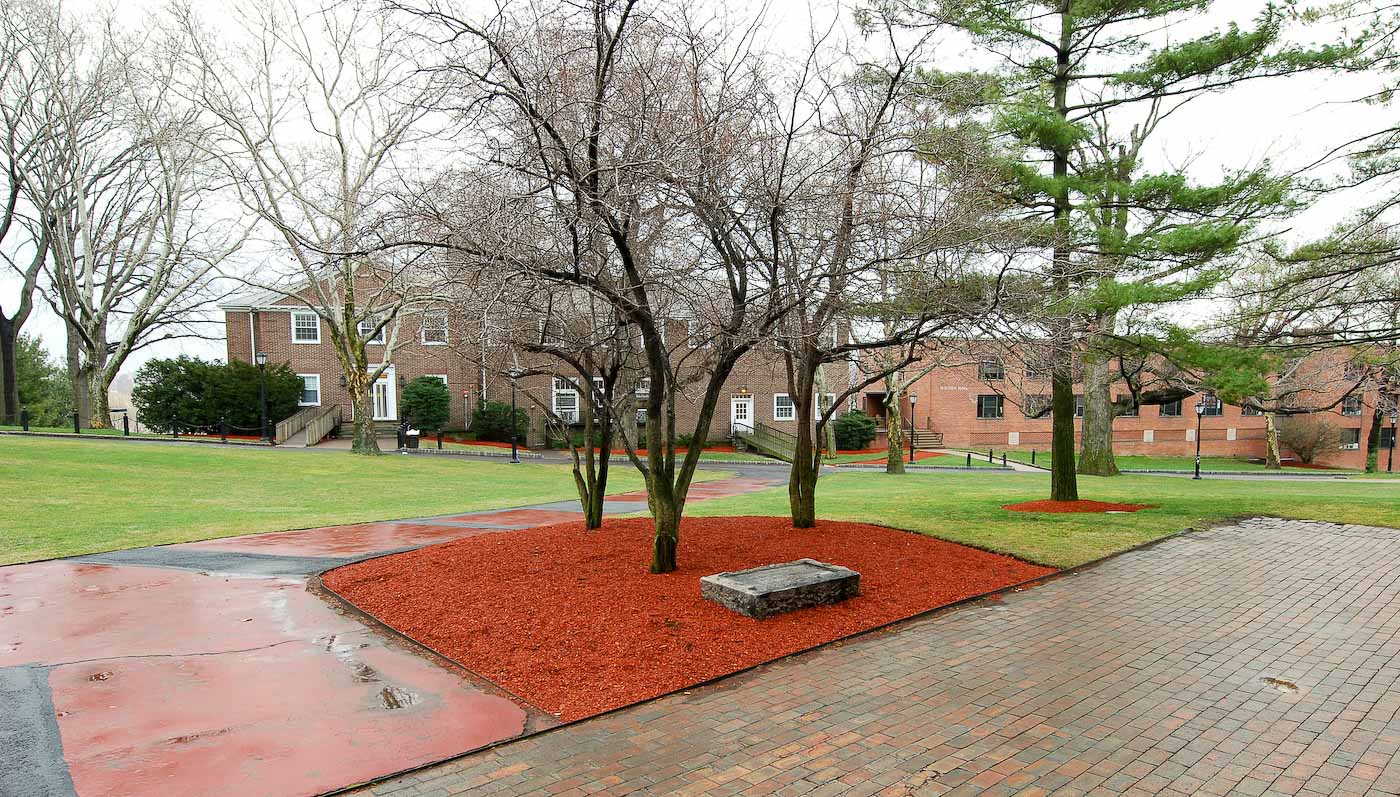
From the Brooklyn Bridge’s iconic masonry to the double-decked steel of the George Washington, New York City’s surroundings are undoubtedly home to some of the most famous bridges in the country. But around the turn of the 20th century, a new bridge that would have connected Hoboken to Manhattan seemed well on its way to getting built before getting lost in the shuffle of the rapidly-evolving times.
Plans for what was dubbed the North River Bridge were commenced all the way back in the 1880s, initially spurred on by the Pennsylvania Railroad Company. The rail carrier wanted to build a direct link for their trains to cross the Hudson River into New York City and none existed at that time, so they hired Austria-born engineer Gustav Lindenthal to dream them up a bridge.

Lindenthal, who had previously designed Pittsburgh’s Smithfield Street Bridge and would later plan the Queensboro and Hell Gate Bridges, came up with a 3,100-foot structure that would have spanned from Manhattan’s waterfront on 23rd Street to the intersection of 12th and Garden Streets in Hoboken. Ten train tracks would have been included on the suspension bridge, which would have been the biggest one built at that time.
The North River Bridge would take trains from the Jersey side of the Hudson over to a newly-built terminal at 23rd Street and 6th Avenue in Manhattan, as Penn Station did not yet exist. The bridge itself would have cost $15 million to construct and another $25 million would be needed for land acquisition, buying rights-of-way and building the eventual station.
Since the project would span federal waterways, the plans had to be approved by Congress, who gave the green light to the bridge in 1890. In 1892, the newly-formed North River Bridge Company began to condemn property in Hoboken for the undertaking, but luck never seemed to be on the project’s side.
Construction of the bridge was delayed by the financial Panic of 1893, but the project did eventually break ground in June of 1895. Work was sporadic due in part to the economic depression of the era and construction was later halted in 1898, which created an opening for a new technological advancement to render the North River Bridge obsolete.
The Hudson Tubes, today known as the PATH, were under construction around the same time as the bridge and initially opened in 1906. The Pennsylvania Railroad took notice of the success the underground, electric-driven system had and diverted funding from the North River Bridge project into building new rail tunnels underneath the Hudson River.

Marlon Brando, in a film that was shot in Hoboken, once famously claimed that “I coulda been a contender” and the North River Bridge Company must have felt the same way. The project was never completed, although Lindenthal did make a second failed attempt at a massive bridge across the Hudson River in the 1920s, that one spanning from the West New York waterfront to 57th Street in Manhattan.

 Today, all that remains of the North River Bridge is a granite cornerstone from the bridge’s groundbreaking ceremony, which was amazingly located in the backyard of a private brownstone at 1200 Garden Street for many years. It was moved to the campus of Stevens Institute of Technology in the 1980s and is currently on display in front of the school’s library, offering passersby a glimpse into what ‘coulda’ been.
Today, all that remains of the North River Bridge is a granite cornerstone from the bridge’s groundbreaking ceremony, which was amazingly located in the backyard of a private brownstone at 1200 Garden Street for many years. It was moved to the campus of Stevens Institute of Technology in the 1980s and is currently on display in front of the school’s library, offering passersby a glimpse into what ‘coulda’ been.